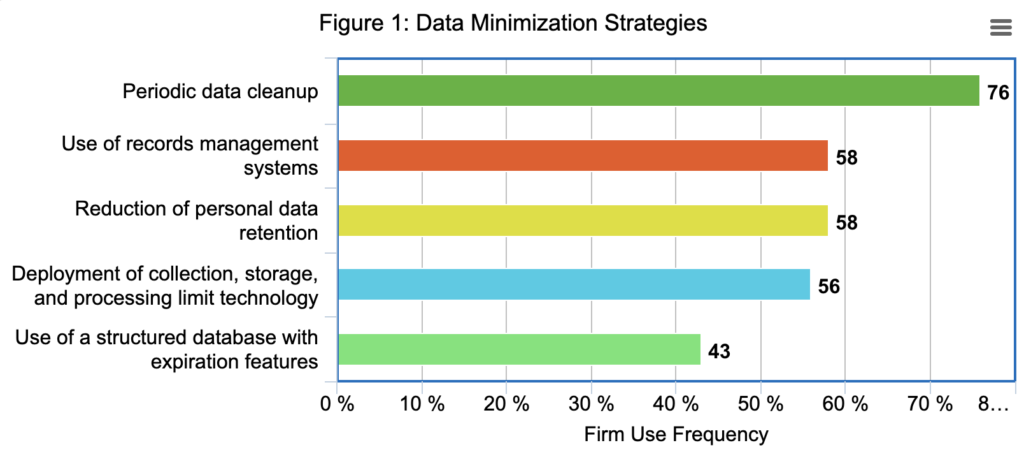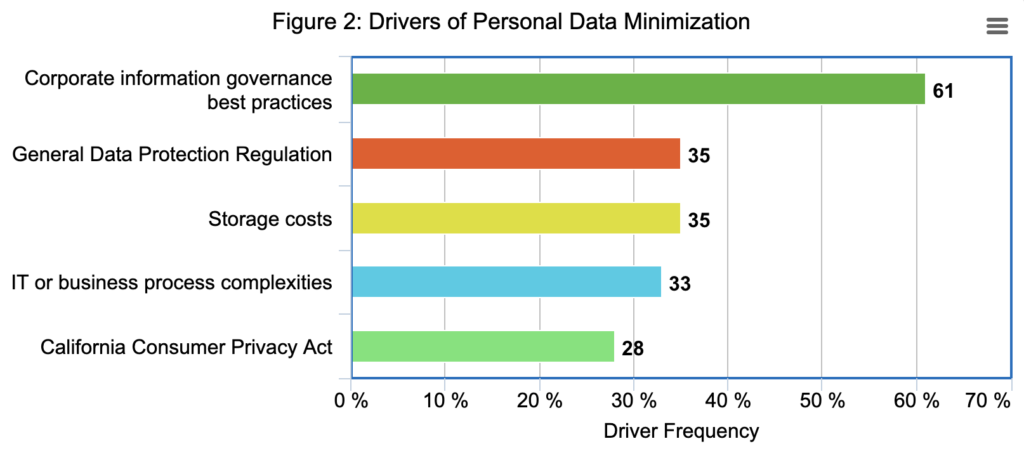
Enterprise Content Integration & Migration Products | Anaqua (formerly SeeUnity)
Due to the rise of big data, organizations have accumulated surpluses of structured and unstructured data that negatively impacts a business’s ability to function efficiently. To address these issues, organizations are implementing storage, governance, and utilization strategies that often lead to higher levels of success and profitability. These strategies include use of technologies such as application integration and synchronization, and migration to cloud-based repositories.
The Negative Impact of Unstructured Data
Unstructured data grows 40% each year4 and has an undeniable impact on organizations. Only 1% of this data is analyzed or used for business objectives2, while 85% of all enterprise data is considered redundant, obsolete, or trivial (ROT) and was projected to cost organizations $3.3 trillion by 20201. Much of this cost comes from additional man-hours, with 60-80% of the typical analytics project dedicated to the collection and cleansing of unstructured data5.
The legal industry is all too familiar with the disadvantages of unstructured data. After surveying 300 US law firms, Thomson Reuters found that 72% reported administrative tasks to be at least a “moderate challenge.” When more time is spent on these tasks, resources are not properly allocated for cases, causing client dissatisfaction, low-quality work, attorney burnout, and a reduction of billable hours10.
Data Minimization and Cleansing
Because of the risks associated with big data, law firms are employing minimization initiatives to prevent the buildup of unnecessary information. To analyze legal minimization practices, the Coalition of Technology Resources for Lawyers conducted a study of 19 North American firms. Participant definitions of “data minimization” included:
- – Discontinuing the collection of data that does not contribute to business objective fulfillment
- – Stopping data retention that cannot be utilized for legitimate business purposes
- – Deleting ROT data7
Firms reported both reactive and proactive strategies for data minimization, with the most popular being periodic data cleanup, use of records management systems, and reduction of personal data retention (Figure 1). Drivers for reducing the retention of personal data spanned from corporate best practices to cost efficiency and government regulations (Figure 2). Firms also reported fear of data breach as a motivator, due to reputational damage and lawsuit risks associated with large stores of personal information7.
Data minimization can be a daunting task for law firms, with 83% of survey respondents voicing concerns about the process damaging necessary data7. However, with the correct technology, this process can be executed seamlessly without damaging organizational structures.
Breaking Down Data Silos
When large stores of data accumulate within organizations, data silos are created. These silos damage workflow, waste valuable resources, and endanger data accuracy, leading to issues that are prominent throughout an organization:
- 1. When data is siloed, the organization’s culture becomes less collaborative, creating a separation of teams and an uneven distribution of knowledge.
- 2. Unstructured and inaccessible files lead to duplicate work and unnecessary expenditures of time and effort.
- 3. IT resources are wasted searching for data in order to perform essential tasks.
- 4. Data analytics projects are more difficult and time-consuming.
- 5. Individuals become confused about permissions surrounding data access.
- 6. Due to confusion, unapproved applications are used and there is a lack of data awareness, leading to data leaks.3
- Associated silo effects of potential data breech, sharing the wrong versions of documents, violations of data governance, etc. present legal risks that can be detrimental to an organization’s reputation and business processes
In order to break down data silos and avoid the above, organizations employ integration, synchronization, and migration technologies, including SeeUnity’s Fusion, Echo, and Velocity solutions. By integrating and synchronizing data, organizations are able to securely collaborate both internally and externally. Organizations are also using DMS migration to the cloud as an opportunity to eliminate data silos in file shares, custom developed applications, and legacy systems. Unification and cleansing of an organization’s content promotes knowledge sharing, maximizes efficiency, streamlines workflow, and increases client engagement and satisfaction.
When data is centralized, a single source of truth (SSOT) is created to streamline processes and eliminate confusion. Financial advantages of SSOT are almost immediate, and were observed in an American International Group (AIG) case study. When AIG’s SSOT digital strategy was implemented, the company saved $75 million in IT costs within the first year2. Integrations also unify data from multiple applications by offering content surfacing and search tools. This leverages collective knowledge and eDiscovery capabilities to accomplish organizational objectives. Most importantly, integration benefits include data governance to protect organizational content assets, legal standing, and reputation.
Harnessing the Power of Big Data in the Legal Industry
Although big data could harm an organization, it is a powerful asset for law firms when used correctly. When legal data is thoughtfully mined and analyzed, firms experience time-saving and insight-driven benefits:
• Model document content creates templates for new documents
• Historical matter data informs strategies for current matter
• Winning case strategy records are kept and leveraged for new cases8
Global law firms are on the same page when it comes to the benefits of utilizing big data strategically. When 300 leading law firms across the UK, Europe, US and Australia were surveyed, 90% had the belief that using data-driven insights to manage client terms is important. However, only 16% were using technology solutions for this purpose6. As technology develops, leaders in the legal industry are prioritizing data management innovations for higher levels of success. When the digital strategies of enterprise organizations were analyzed, those that employed newer system operating models as part of their data strategy financially outperformed others in their market category. Additionally, the biggest barrier to this success was found to be unstructured data.9
The key to unlocking these benefits lies in the implementation of proper DMS practices. These include correctly tagging each matter’s metadata, employing software integrations and syncs, maintaining data governance initiatives, and most importantly, creating a thoughtful training and adoption plan.
It is important to note that these DMS practices are only part of a larger digital strategy to improve organizational functions through the control of data flow and storage. Migrating to a modern system is also a part of the equation, as it offers the opportunity to verify, cleanse, and transform data. This process optimizes user functionality and data control without the risks and inconveniences of reorganizing data manually within a new system. Overall, creating a well thought-out digital strategy is the only way to tackle an organization’s big data concerns.
How SeeUnity Can Help
Our team helps organizations maximize data strategy initiatives with our enterprise-class content integration and migration solutions. SeeUnity’s API-based products and connectors create opportunities to capitalize on modern digital technologies by enabling:
• Data verification, clean-up, and transformation throughout the content migration process
• Break-down of data silos with secure integrations
• Collaboration and simplified workflow with content integration and sync
• Maintenance of data compliance initiatives
• Data governance enforcement through auditing, user reporting, storage management, etc.
For the past 16 years, we have helped our global customers of all sizes access disparate systems and modernize legacy systems with our content integration and migration solutions. Read our clients’ success stories below to learn more about how our products support enterprise business objectives.
Fox Entertainment Group Establishes Collaboration Between Sales and Legal Teams (Salesforce, eDOCS)
Burness Paull Improved Content Availability and Accuracy (iManage, HighQ, SharePoint)
Neal, Gerber, & Eisenberg Optimize Productivity by Streamlining Attorney Workflow (iManage Work and HighQ)
MacRoberts LLP Bridges the Content Divide with SeeUnity Echo Content Synchronization (iManage Work, SharePoint)
Wilkes Artis Sharpens Their Competitive Edge by Moving to the iManage Cloud (iManage on-premise to iManage Cloud)
More Resources
Content Transformation: The Key to Optimizing Cloud-Migrations
Sources:
Craine, K. “Five warning signs it’s time to ditch your legacy document management system.” AIIM. 2019.
DalleMule, L., Davenport, T. H. “What’s your data strategy?” Harvard Business Review. May 2017. https://hbr.org/2017/05/whats-your-data-strategy
“Disadvantages of data silos- How to connect your data.” Qualtrics. 2020. https://www.qualtrics.com/uk/experience-management/research/data-silos/
Mancini, J. “5 myths about ROT- Redundant, obsolete, and trivial files.” AIIM. September 2011. https://info.aiim.org/aiim-blog/newaiimo/2011/09/20/5-myths-about-rot-redundant-obsolete-and-trivial-files
Moshe, K. “Data ingestion best practices.” CMS Wire. January 2018. https://www.cmswire.com/information-management/data-ingestion-best-practices/
“Navigating a new reality in the client-empowered era.” Intapp. 2018. https://www.intapp.com/wp-content/uploads/2018/09/The-Lawyer-Global-Report.pdf
Osterman Research and Coalition of Technology Resources for Lawyers. “Big data is dead! Yet “small data” isn’t ready for primetime.” Relativity. September 2019. https://resources.relativity.com/rs/447-YBT-249/images/WhitePaper_Relativity_CTRL%20Data%20Minimization%20Study_2019.pdf
Stansfield, D. “Law firms enter the golden age of data mining.” Law Journal Newsletters. December 2019. https://www.lawjournalnewsletters.com/2019/12/01/law-firms-enter-the-golden-age-of-data-mining/
“The rise of data scientists in the legal industry.” Intapp. 2019. https://storage.pardot.com/273732/82368/The_rise_of_the_legal_data_scientists_final
“Understand the importance of law firm efficiency.” Thomson Reuters. 2019. https://legal.thomsonreuters.com/en/insights/articles/the-importance-of-law-firm-efficiency
Related Posts


Product Updates & Roadmap 2023-24 (North America Session)

An IP Management Platform Journey: Collaboration and Strategic Vision

Opus 2 and SeeUnity partnership offers DMS integrations to enhance security and collaboration for lawyers

How Better Connecting Your Data and Systems Creates Efficiency

Automated Content Sync for AQX® and Your DMS
Footer

An IP Management Platform Journey: Collaboration and Strategic Vision
- +1 970-776-8300
- Info@SeeUnity.com
-
5255 Ronald Reagan Blvd.,
Johnstown, CO, 80534 USA - Visit Anaqua's Site
- Visit WiseTime's Site


